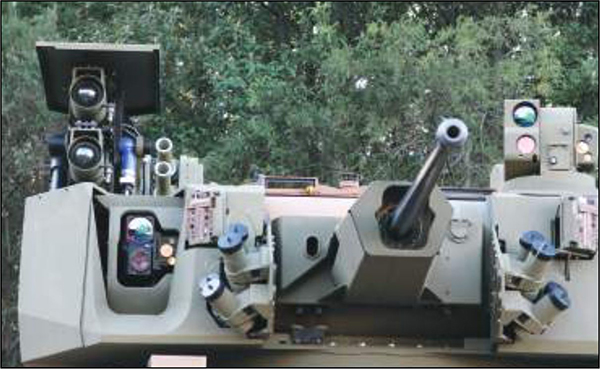The Defence Research and Development Organisation (DRDO) is developing a new advanced laser threat detection system for armoured fighting vehicles meant to enhance the survivability of combat platforms in the battlefield.
The system will comprise sensors and processing units retrofitted on armoured vehicles like tanks and mechanised infantry combat vehicles to detect the use of lasers by the enemy for detection and target acquisition and to take counter-measures.
The project is being executed by DRDO’s Instruments Research and Development Establishment (IRDE) at Dehradun, which is inviting the industry to design, develop and manufacture the proposed system. IRDE’s research arena includes electro-optical instruments, thermal imagers, night-vision devices and laser-based instruments.
The proposed system is required to detect threats at ranges up to six kilometres. It will have four sensors mounted on the vehicle’s turret at different places to provide a 360-degree coverage to detect threats from sources such as laser range finders, laser target designators and laser munition guiding beams.
The control units and display screens will be mounted inside, adjacent to the commander’s console, and give out an audio and visual warning to the crew, classify the type of threat and enable them to take counter-measures such as firing smoke grenades to obscure the vehicle and move to a different location.
Earlier, another DRDO laboratory, Laser Science and Technology Centre, New Delhi, had produced a laser threat detection system for the indigenously developed Arjun main battle tank. The Army has in its inventory several other armoured vehicles like the T-72 and T-90 tanks and BMP 2/3 mechanised infantry combat vehicles.
The DRDO has been working in the field of lasers for a host of other applications such as protection of high-value assets from aerial attacks, safe ammunition disposal, surveillance, guidance of precision munitions, optical-dazzling, target location and acquisition, detection and identification of explosives, chemical and biological agents and for testing and evaluating various systems.
Besides combat operations by the armed forces, some of these systems can also be used by the paramilitary forces and the police for border management and in low-intensity conflict environment.


















